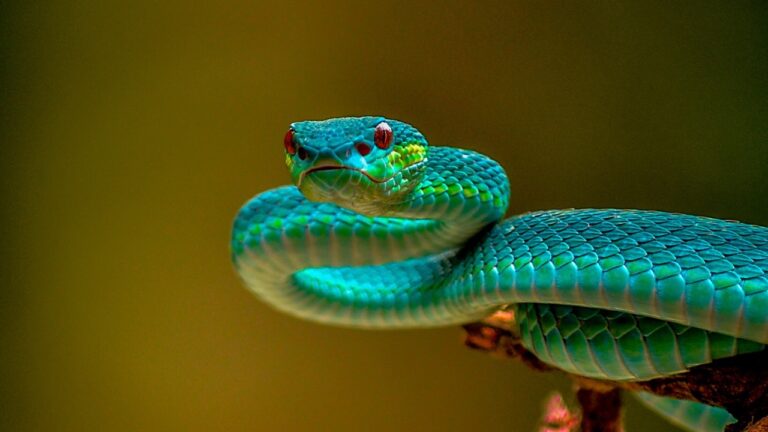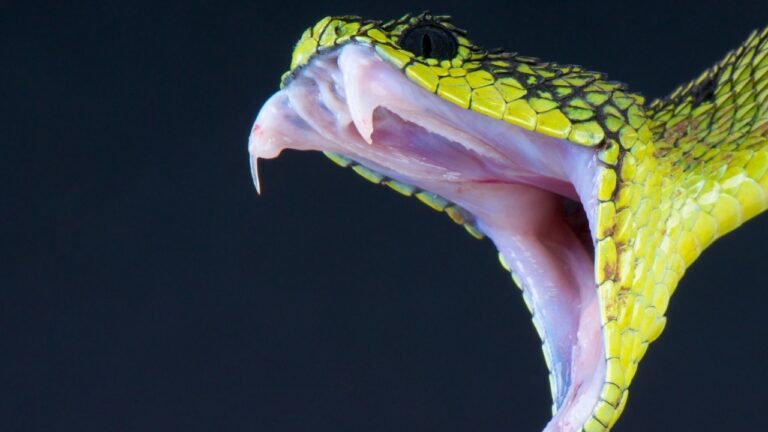Snake Feeding Schedules: A Guide to Optimal Nutrition
Importance of proper snake feeding schedules
Snakes are fascinating creatures with unique feeding habits. As a responsible snake owner, it is crucial to understand the importance of establishing and maintaining a proper snake feeding schedule. By providing your snake with a consistent and well-balanced diet, you can ensure its overall health and well-being.
Proper snake feeding schedules are essential for several reasons. First and foremost, they mimic the natural feeding patterns of snakes in the wild, which promotes their physical and mental health. Snakes are cold-blooded animals, which means their metabolism is directly influenced by their environment. By adhering to a regular feeding routine, we can help maintain their body temperature and digestive processes.
Moreover, establishing a feeding schedule helps prevent overfeeding or underfeeding, both of which can have detrimental effects on your snake’s health. Overfeeding can lead to obesity, which can increase the risk of various health issues. On the other hand, underfeeding can result in malnutrition and stunted growth.
A well-planned snake feeding schedule also ensures that your snake receives the appropriate nutrients it needs to thrive. Different snake species have varying dietary requirements, and their feeding schedules should reflect this. By tailoring the feeding schedule to your snake’s specific species, age, and size, you can provide the optimal nutrition it needs to maintain its overall health.
Understanding the importance of proper snake feeding schedules is the first step in providing optimal care for your snake. In the following sections, we will delve into the factors you need to consider when establishing a feeding schedule, the types of feeding schedules for different snake life stages, and the signs of proper nutrition to look out for. So let’s embark on this journey together, ensuring our scaly companions receive the nourishment they deserve!
If you’re looking for a comprehensive snake feeding guide, check out our snake feeding guide for more detailed information on creating a healthy feeding routine.
Factors to Consider
When it comes to establishing a proper snake feeding schedule, there are several factors that need to be taken into consideration. These factors include the snake species, age and size of the snake, and feeding frequency. By understanding these elements, snake owners can ensure that their pets receive the optimal nutrition they need to thrive.
Snake Species
Various snake species have different dietary requirements. Some snakes are carnivorous, feeding primarily on rodents, while others may have a diet consisting of insects, fish, or even other reptiles. It is essential to research and understand the specific dietary needs of your snake species to provide them with the appropriate nourishment. For instance, if you have a corn snake, you should know that their diet mainly consists of mice and rats.
Age and Size of the Snake
The age and size of the snake also play a crucial role in determining its feeding schedule. Younger snakes, such as newborns or juveniles, require more frequent feedings to support their rapid growth and development. As snakes mature and reach adulthood, their metabolic rate slows down, and they require less frequent meals.
It is important to note that the size of the prey offered to a snake should be proportionate to its own size. Feeding a snake prey that is too large can lead to regurgitation or other digestive problems, while offering prey that is too small may not provide the necessary nutrients. Therefore, it is crucial to consider the size of your snake when selecting the appropriate prey size.
Feeding Frequency
Feeding frequency is another critical factor to consider when establishing a snake feeding schedule. The frequency of feedings varies depending on the age and species of the snake. Newborn or young snakes typically require more frequent meals, often every five to seven days, as they are in a period of rapid growth. Juvenile snakes may be fed every seven to ten days, while adult snakes may only need to be fed every ten to fourteen days.
It is important to remember that these feeding frequencies are general guidelines, and individual snakes may have unique needs. Factors such as the snake’s activity level, metabolism, and overall health can influence the ideal feeding frequency. It is essential to observe your snake’s behavior, body condition, and consult with a veterinarian to determine the most suitable feeding schedule for your specific snake.
By considering the snake species, age and size of the snake, and feeding frequency, snake owners can create a feeding schedule that promotes optimal nutrition and overall well-being for their scaly companions.
For a comprehensive guide on snake feeding schedules, consult our snake feeding guide.
Types of Snake Feeding Schedules
When it comes to feeding snakes, it’s crucial to tailor the feeding schedule to meet the specific needs of each snake at different stages of life. Understanding the different types of snake feeding schedules is essential to ensure optimal nutrition and overall health. Let’s explore the feeding schedules for newborn/young snakes, juvenile snakes, and adult snakes.
Newborn/Young Snakes
Newborn and young snakes require a slightly different feeding schedule compared to their older counterparts. These delicate creatures have unique nutritional requirements to support their rapid growth and development. Typically, newborn and young snakes are fed more frequently than adult snakes. They often require feeding every 5 to 7 days, with appropriately sized prey to accommodate their smaller size.
Juvenile Snakes
As snakes transition from their early stages of life, their feeding schedule should be adjusted accordingly. Juvenile snakes have a higher metabolic rate and require more frequent feedings than adult snakes. Generally, they should be fed every 7 to 10 days, depending on their species and size. It is essential to monitor their growth and adjust the feeding schedule accordingly to ensure they receive adequate nutrition.
Adult Snakes
Once snakes reach adulthood, their feeding schedule becomes less frequent. Adult snakes have a slower metabolism and can thrive with less frequent meals. Feeding adult snakes every 10 to 14 days is generally sufficient to maintain their health and well-being. However, it’s important to note that certain snake species may have specific feeding requirements, so it’s always best to research and consult with a professional veterinarian or herpetologist.
By understanding the different types of snake feeding schedules, snake owners can provide their reptilian companions with the appropriate nourishment at each stage of life. Remember, a well-balanced and consistent feeding routine is vital for the overall health and longevity of snakes.
If you’re looking for more information on snake feeding schedules, be sure to check out our comprehensive snake feeding guide. It offers valuable insights into snake feeding habits, tips, and common mistakes to avoid. Additionally, our snake feeding chart provides a handy reference for determining the appropriate prey size and feeding frequency for different snake species.
Feeding Methods
When it comes to feeding your snake, there are several methods you can choose from. The right method for your snake will depend on factors such as its species, size, and personal preference. In this section, we will explore three common feeding methods: live feeding, frozen/thawed feeding, and assisted feeding.
Live Feeding
Live feeding involves offering your snake live prey, typically small rodents or insects. Some snake owners prefer this method because it mimics the natural hunting behavior of snakes in the wild. Watching their snake catch and consume live prey can be an exciting experience for many reptile enthusiasts.
However, live feeding comes with its own set of risks and challenges. Live prey can potentially injure your snake during the feeding process, especially if the prey is too large or aggressive. Additionally, if the snake does not immediately consume the live prey, it can lead to stress and potential injuries for the prey itself. It is important to closely monitor the feeding process to ensure the safety of both your snake and the prey.
Frozen/Thawed Feeding
Frozen/thawed feeding, also known as pre-killed feeding, involves offering your snake prey that has been previously euthanized and then frozen. This method is widely recommended by experts as a safer alternative to live feeding. By using frozen prey, you eliminate the risk of injury to your snake and ensure that the prey is safe and disease-free.
To feed your snake using the frozen/thawed method, simply thaw the prey item in warm water and then offer it to your snake using tongs or forceps. Many snake owners find this method more convenient because they can safely store a supply of frozen prey in their freezer, making it readily available whenever it’s time to feed.
Assisted Feeding
Assisted feeding is a feeding method used for snakes that are unable or unwilling to eat on their own. This can occur due to illness, injury, or other underlying health issues. In such cases, it may be necessary to provide assistance to ensure your snake receives the proper nutrition it needs to recover and thrive.
Assisted feeding typically involves the use of feeding tubes or assistive devices to deliver food directly into the snake’s digestive system. This should only be done under the guidance of a veterinarian or an experienced reptile specialist, as it requires specialized knowledge and skill to perform safely.
It’s important to note that assisted feeding should only be used as a last resort when all other methods have been exhausted. If you find yourself in a situation where your snake requires assisted feeding, seek professional advice immediately to ensure the best possible outcome for your snake’s health.
Remember, the feeding method you choose should align with your snake’s specific needs and circumstances. It’s always a good idea to consult with a veterinarian or reptile expert to determine the most suitable feeding method for your snake.
Now that we’ve explored the different feeding methods, let’s move on to the next section, where we will discuss the signs of proper nutrition for your snake.
Signs of Proper Nutrition
Ensuring that your snake is receiving proper nutrition is crucial for their overall health and well-being. By observing certain signs, you can determine if your snake is on the right track with their feeding schedule. Here are some key indicators to look out for:
Healthy Weight and Body Condition
One of the most evident signs of proper nutrition in a snake is maintaining a healthy weight and body condition. A well-fed snake should have a plump, muscular body. You should be able to feel their ribs, but they should not be overly prominent or easily visible. Regularly weighing your snake can help you track their weight and ensure they are neither underweight nor overweight. Remember, each snake species has its own ideal weight range, so be sure to consult a snake feeding guide specific to your snake’s species for accurate information.
Consistent Shedding
Healthy shedding is another positive sign that your snake is receiving the right nutrition. A snake that sheds its skin regularly indicates a healthy growth rate. During the shedding process, a well-nourished snake will shed their skin in one complete piece, without any patches or fragments remaining. If your snake experiences difficulties shedding or exhibits incomplete sheds, it may be a sign of nutritional deficiencies. In such cases, reviewing your snake feeding routine and consulting a veterinarian is recommended.
Regular Bowel Movements
Monitoring your snake’s bowel movements is an essential aspect of assessing their nutritional status. Healthy snakes should have regular, well-formed stools. The frequency of bowel movements can vary depending on the snake species and individual factors, so it’s important to be familiar with your snake’s snake feeding habits. Any sudden changes in frequency, consistency, or color of bowel movements may indicate digestive issues or improper nutrition. If you notice any abnormalities, it’s best to seek veterinary advice.
Active Behavior
Another telltale sign of a well-nourished snake is their behavior and activity level. A properly fed snake should exhibit alertness, curiosity, and engage in normal activities. They should be active during their active periods and rest during periods of inactivity. If your snake appears lethargic, lacks appetite, or displays unusual behavior, it could be a sign of nutritional imbalances or health problems. Keeping a close eye on their behavior will help you identify any potential issues early on.
By keeping a keen eye on these signs, you can ensure that your snake is receiving the nutrition they need. Remember, maintaining a snake feeding schedule tailored to your snake’s species, age, and size is crucial for their overall well-being. However, it’s essential to note that these signs are general indicators, and if you have any concerns about your snake’s nutrition, it’s always a good idea to consult with a veterinarian who specializes in reptiles. They can provide you with personalized advice and help you customize a feeding plan that suits your snake’s specific needs.
Next, let’s explore some of the most common mistakes to avoid when it comes to snake feeding. Stay tuned!
Internal links:
Common Mistakes to Avoid
When it comes to feeding your snake, there are several common mistakes that snake owners should be aware of in order to provide optimal nutrition for their reptilian companions. Overfeeding, inadequate feeding, and incorrect prey size are three key errors that can have negative impacts on a snake’s health and well-being.
Overfeeding is one of the most prevalent mistakes made by snake owners. It’s essential to remember that snakes have slower metabolisms compared to other animals. Feeding them too frequently or providing meals that are too large can lead to obesity and a range of associated health issues. The best approach is to follow a well-balanced feeding schedule based on your snake’s species, age, and size. This will help ensure that your snake receives the appropriate amount of food without overindulging.
On the other hand, inadequate feeding is another mistake that can compromise a snake’s health. Underfeeding can result in malnutrition, stunted growth, and weakened immune systems. It’s crucial to understand the specific dietary requirements of your snake species and provide them with the correct amount and type of prey. Consulting a veterinarian or referring to a reliable snake feeding guide can help you determine the appropriate feeding routine for your snake.
Equally important is providing the correct prey size for your snake. Snakes have unique feeding habits, and their prey size should match their individual needs. Offering prey that is too large can pose a choking hazard or result in regurgitation, while prey that is too small may not provide sufficient nutrition. A snake feeding chart or consulting with a veterinarian can assist in determining the ideal prey size for your snake’s specific species and age.
To ensure the well-being of your snake, it is important to avoid these common feeding mistakes. By adhering to a proper feeding schedule, understanding your snake’s dietary requirements, and providing prey of the appropriate size, you can help promote a healthy and thriving reptile companion.
For more information on snake feeding tips and solutions to common feeding problems, refer to our snake feeding guide.
Consultation with a Veterinarian
When it comes to ensuring the optimal nutrition and well-being of your snake, seeking professional advice from a veterinarian is crucial. While it’s possible to find general guidelines and information online, a veterinarian can provide personalized guidance based on your snake’s specific needs and circumstances.
Importance of seeking professional advice
Veterinarians specializing in reptiles have the expertise and knowledge to evaluate your snake’s health, analyze its feeding habits, and create a customized feeding plan. They can take into account various factors such as the species of snake, age, size, and overall health condition. Consulting with a veterinarian ensures that you receive accurate and up-to-date information regarding your snake’s nutritional requirements.
In addition, a veterinarian can help address any concerns or issues you may have about your snake’s feeding habits. They can assist in identifying and resolving potential problems such as difficulty in shedding, irregular bowel movements, or signs of malnutrition. By seeking professional advice, you can gain valuable insights into your snake’s well-being and make informed decisions regarding its diet and care.
Customizing feeding schedules
Every snake is unique, and their feeding requirements can vary based on factors such as species, age, and size. A veterinarian can help you customize a feeding schedule that suits your snake’s specific needs. They will consider the appropriate prey size, feeding frequency, and the transition between different prey types as your snake grows.
Moreover, consulting with a veterinarian can prevent common feeding mistakes that could negatively impact your snake’s health. They can guide you on avoiding overfeeding, which can lead to obesity and associated health issues. They can also advise you on providing adequate nutrition and ensuring that the prey size is appropriate for your snake’s size and feeding capabilities.
By working closely with a veterinarian, you can establish a feeding routine that promotes your snake’s overall health and well-being. They can provide you with a comprehensive understanding of your snake’s feeding behavior, offer tips on improving its feeding habits, and address any concerns you may have along the way.
In conclusion, consulting with a veterinarian is a vital step in ensuring the proper nutrition and care of your snake. Their professional expertise and personalized guidance can help you create a feeding plan that caters to your snake’s individual needs. By seeking professional advice and customizing feeding schedules, you can provide your snake with the best possible nutrition, promoting a healthy and thriving reptile companion.
For more information on snake feeding, you may want to check our snake feeding guide or visit our website for further resources on snake feeding habits, snake feeding tips, and snake feeding mistakes. Additionally, you can find a helpful snake feeding chart and explore different snake feeding plans to assist you in establishing a proper feeding routine for your snake.
Conclusion
Proper snake feeding schedules are essential for ensuring the optimal nutrition and overall health of your slithery companions. By considering factors such as snake species, age and size, and feeding frequency, you can create a feeding plan that meets the specific needs of your snakes.
When it comes to feeding methods, options include live feeding, frozen/thawed feeding, and assisted feeding. Each method has its own advantages and considerations, so it’s important to choose the one that works best for your snakes and their individual preferences.
Monitoring the signs of proper nutrition is crucial. A healthy weight and body condition, consistent shedding, regular bowel movements, and active behavior are all indicators that your snakes are receiving the nutrients they need. These signs can help you gauge the success of your feeding schedule and make any necessary adjustments.
Avoiding common mistakes is key to maintaining the health of your snakes. Overfeeding can lead to obesity and other health issues, while inadequate feeding can result in malnutrition. It’s also important to ensure that you’re offering prey of the correct size to avoid any feeding problems.
While this article provides a comprehensive guide to snake feeding schedules, it’s always a good idea to consult with a veterinarian. They can provide professional advice tailored to your snakes’ specific needs and help you customize the feeding schedule accordingly. Veterinarians have extensive knowledge and experience in reptile care, making them valuable resources in ensuring the well-being of your scaly friends.
In conclusion, by following a well-planned snake feeding schedule and being mindful of their nutritional needs, you can help your snakes thrive. Remember to consider factors such as species, age, and size, choose the appropriate feeding method, and monitor the signs of proper nutrition. Avoid common mistakes and seek professional guidance when needed. With the right approach, you can ensure that your snakes enjoy a healthy and fulfilling feeding routine. For more information, check out our snake feeding guide and snake feeding habits for additional tips and resources.







